RODE Interview PRO review: simple interview audio that looks the part
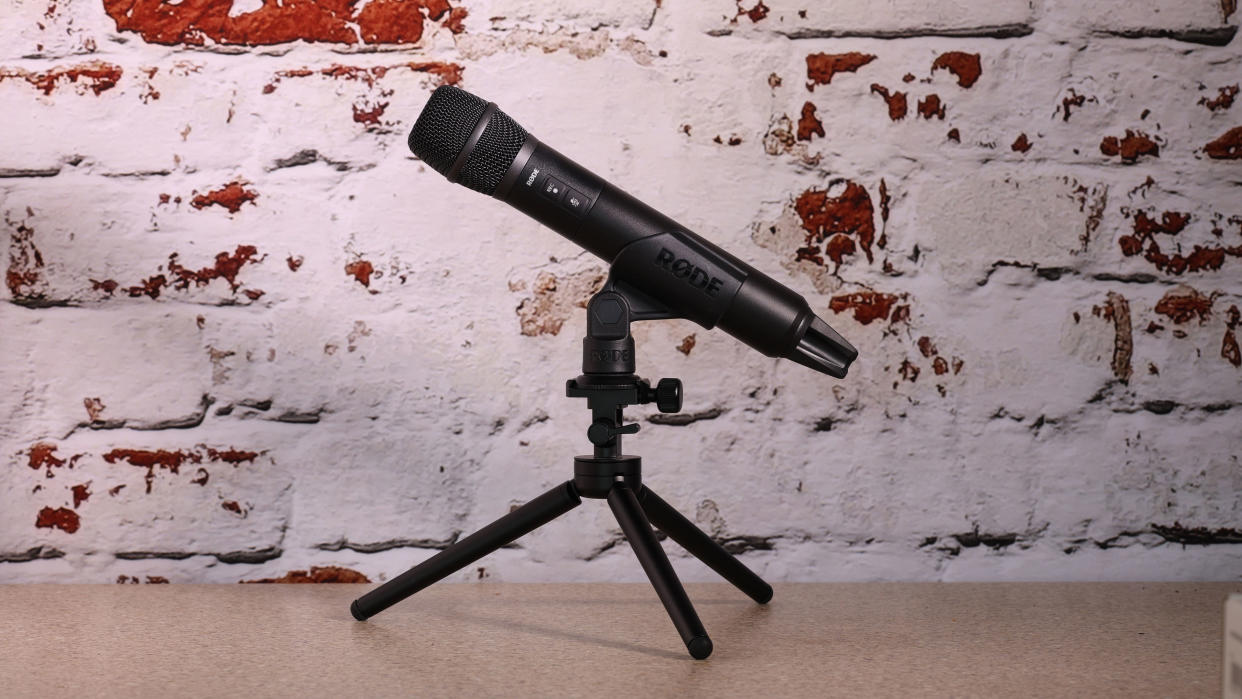
The RODE Interview Pro is designed for those situations where you’re talking to people who aren’t wearing microphones, and where it’s not practical to fit them. For everything from vox pops on the street to ad hoc Q&A sessions at events, a handheld mic is often the best and simplest and quickest solution. Best of all, it makes you look like a proper broadcaster!
The characteristic mic-on-a-stick design is typical of broadcast/interview mics. It lets you quickly position the mic for whoever is speaking and swap speakers easily. What could be more intuitive than aiming a mic at whoever is speaking?
The Interview PRO uses a ‘broadcast grade’ omnidirectional condenser capsule so that it picks up sound from all around and it doesn’t matter if you haven’t got the mic at exactly the right angle. Many of the best microphones use cardioid and directional pickup patterns, but if you accidentally go ‘off axis’ they sound levels will drop.
In fact, most of the best wireless mics are omnidirectional. This is because you can't always 'aim' your mic, but you can place it so that the sound you want is the most prominent.
A broadcast/interview mic like the Wireless PRO is specifically designed for all sorts of environments with people who may or may not be mic-trained. It has an internal shock mount to reduce handling noise and an internal pop filter to reduce ‘plosive’ sounds from speakers too close to the mic. There’s also foam wind shield for outdoor use which will help with plosives too.
What’s special about the Interview Pro is that it’s wireless. There are no cables to trip over or limit your working range. However, the only way to connect it to a camera or other recording device is via one of RODE’s series IV wireless receivers, as supplied with the Wireless ME, for example, or the Wireless PRO kits.
This means it makes most sense to users who already have a RODE wireless setup – otherwise, that’s another investment you’ll need to make.
The Interview PRO does, however, offer up to 40 hours on-board recording with up to 25 hours use from its rechargeable battery, so it can be used as a standalone field recorder. If all you want is the audio for a podcast, for example, or a voiceover, it’s entirely self-contained.
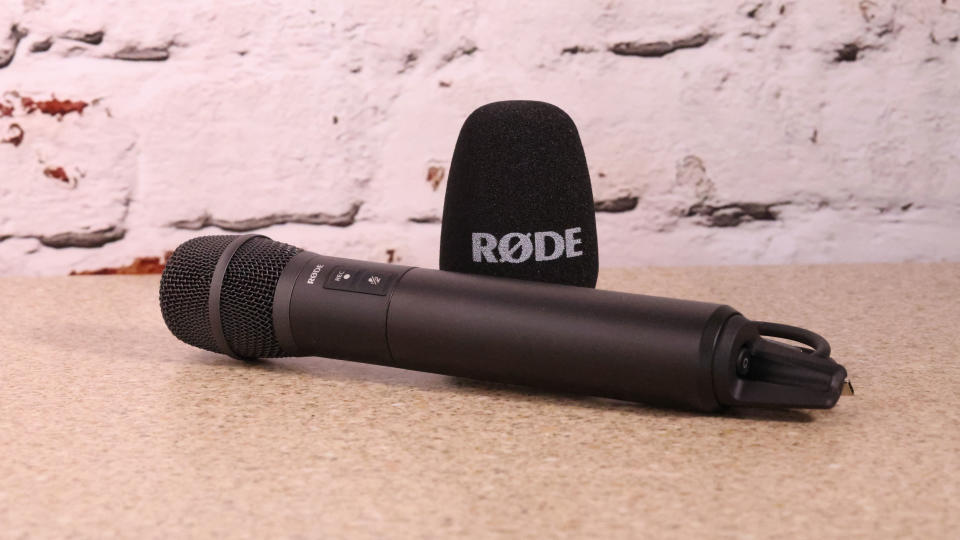
RODE Interview PRO: Specifications
RODE Interview Pro: Price and availability
At the time of writing in May 2024, the RODE Interview PRO is on pre-order, but with delivery also expected in May, it's probably available as you read this.
The Interview PRO will go on sale at a price of $249 / £249 (about AU$373). That sounds a lot compared to on-camera directional mics, but it's pretty fair value for a professional mic in this market. Just be aware that if you don't currently use compatible RODE wireless receivers, you face an additional expense or a severe curtailment of this mic's usefulness.
RODE Interview PRO: Build and handling
The Interview PRO is a delight to handle and use. It feels solid, but not particularly heavy, and it has a prominent Record button which glows red while you’re recording internally. There’s also a Mute button you can press to stop audio recording if you need to. Those are the only controls, so there’s nothing else to learn.
There is a somewhat odd-looking protruding connector on the base, which presumably connects with RODE’s RS-1 charging base, but you can also charge the Wireless PRO via its supplied USB cable, which is perhaps what most users would do.
The USB socket is not immediately visible. You have to unscrew the lower part of the barrel and pull downwards to reveal it. This socket is only for charging and for transferring onboard recordings to the free RODE Central desktop app, where you can also check the mic’s settings and firmware version.
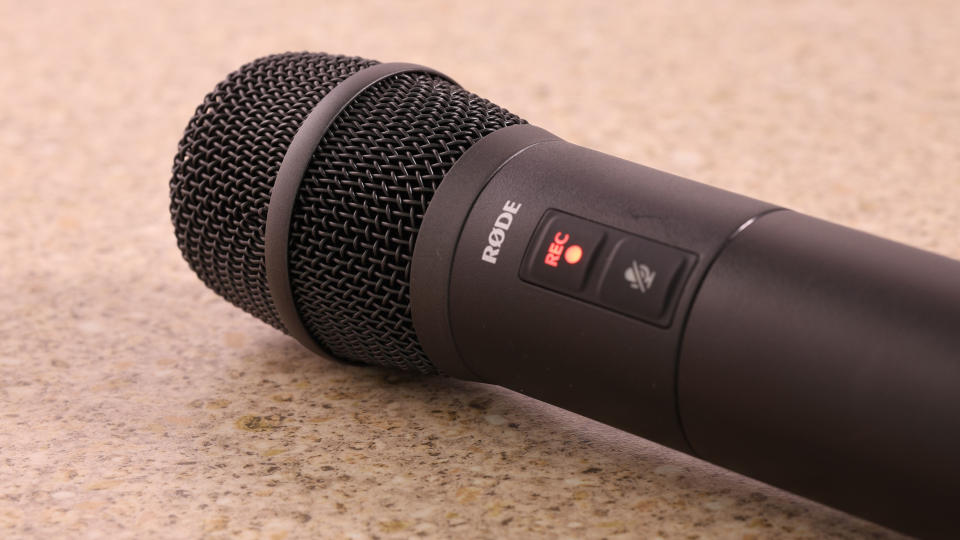
You can’t use the Interview PRO as a USB mic, which seems a shame because it comes with an RM3 angled stand for mounting on a mini-tripod or arm (not supplied), which does make it feel like it could be a useful desktop mic.
The foam windshield is useful to have, though I found it a bit of a wrestling match to get it over the mic grille and once it’s on it’s a bit loose.
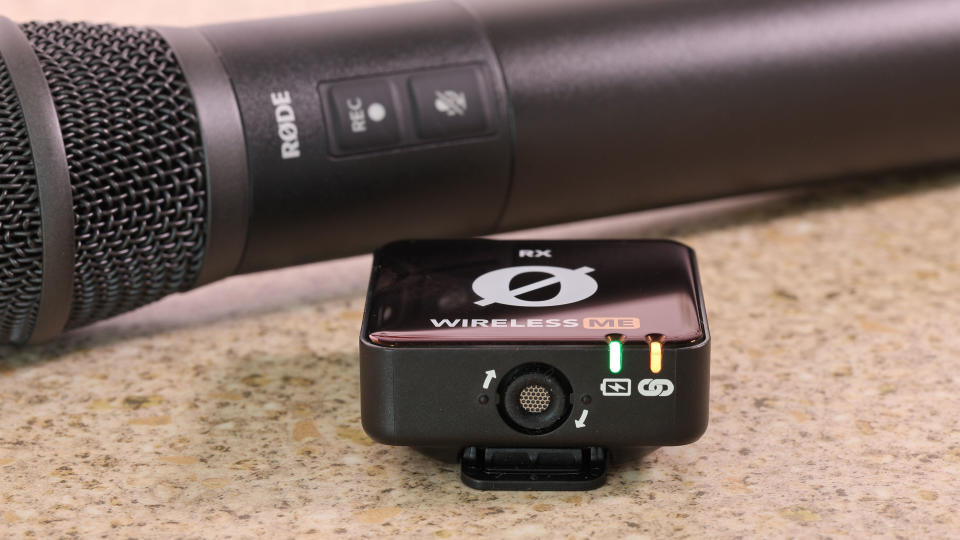
RODE Interview PRO: Performance
The omnidirectional pattern of the Interview Pro is designed specifically for its intended use, but it does pick up sound from all directions, so mic distance does become quite important, especially in a boomy or noisy environment.
In principle, the 32-bit float on-board recording can handle a wide range of audio levels, but in practice, if you want to be heard clearly where there is background noise, it’s best to keep it 3-5 inches from the speaker’s mouth.
The sound is bright and clear, but does change a lot with mic distance – this is a point not always made with microphones. The audio quality of the capsule is important, but not as important as the user’s mic skills, placement, and distance.
You soon get a feel for the perfect distance with the Interview Pro, and the simple freedom and flexibility of a handheld mic is a joy compared to the faff, clips, and cabling of regular lavs or wireless mic transmitters.
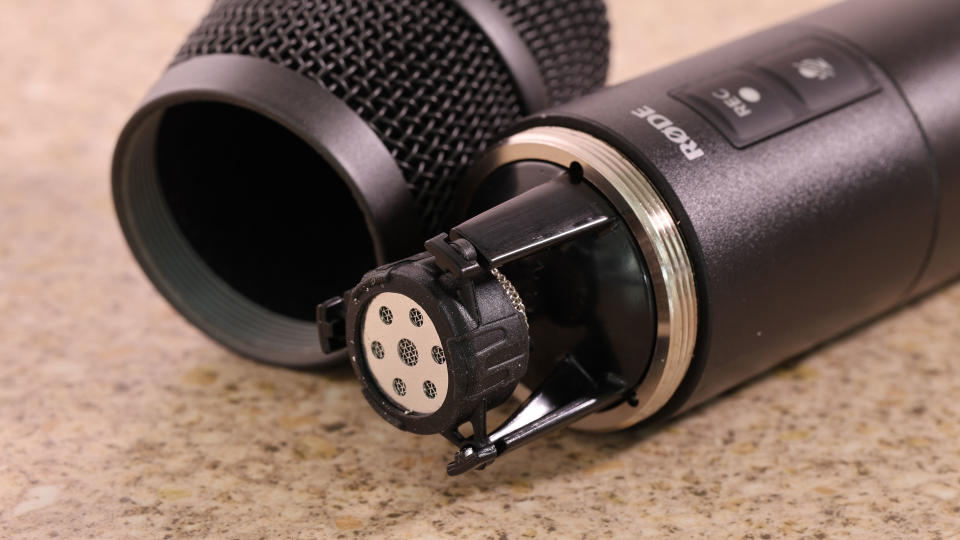
RODE does say the Interview PRO’s internal shock mount cuts down on handling noise. So it may, but it’s still best not to slide your hand over the surface while filming, and to avoid any knocks or taps because you will hear them.
RODE quotes a maximum wireless range of 200mm, but that's with a direct line of sight. My experience with the RODE Wireless PRO suggests that once you're more than a few meters away from the receiver you'd better not turn your back as you talk in case you get drop-out. To be absolutely safe, you can hit the Record button on the mic for on-board recording too.
On paper, the 32-bit float recording sounds like a great idea. In practice, I think mic placement is the real key since that's what's going to control your audio/background noise ratio.
RODE Interview PRO: Verdict
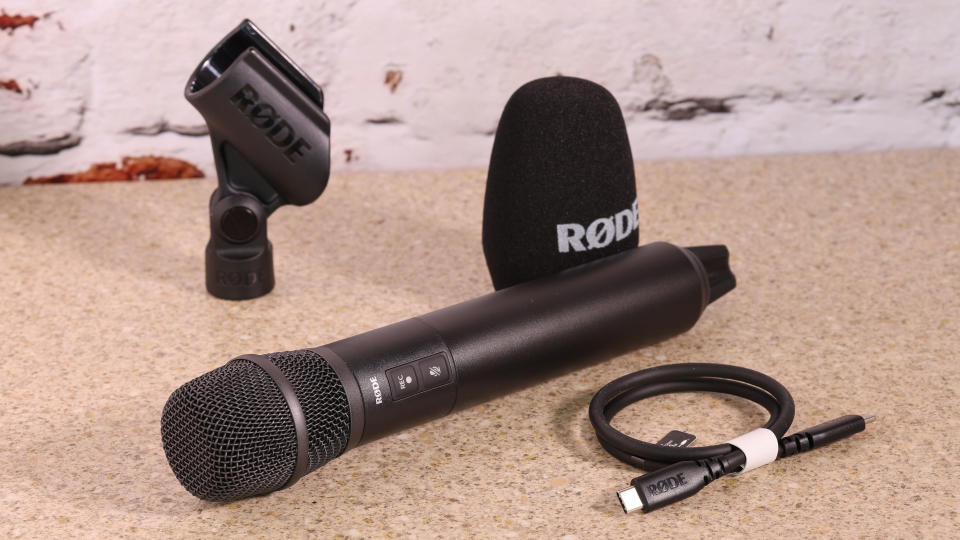
I love the Interview PRO for its design, build quality, finish, and handling. I’ve also spent enough time with wireless mics, clip-on transmitters, and lavalier mics to appreciate the utterly intuitive simplicity of operation this kind of microphone provides. But while the omnidirectional pickup pattern is perfect – essential, even – for working quickly with your subjects in the field, it’s not ideal for voice isolation or that podcast 'radio' voice, and you need to get the mic distance right to keep voices louder than noisy backgrounds. But this is all part of the skill of interviewing, and not really a limitation of this mic.
I do wish, though, that RODE had added an analog output, or digital output, for users who don’t want to buy into its wireless ecosystem. The Interview Pro is almost too good a mic to be painted into a corner like this. The alternative would be to get something like the RODE Reporter, but that’s an XLR mic, which brings its own connectivity requirements, and is not an easy option for mirrorless shooters.
✅ Buy this if...
You already have compatible RODE receivers
You need standalone ‘field’ recording
You need to record conversations and interviews quickly and freely
🚫 Don't buy this if...
You don’t have compatible RODE receivers
You’re looking for a directional mic for voice isolation
You want to record to a computer, phone or camera by cable

